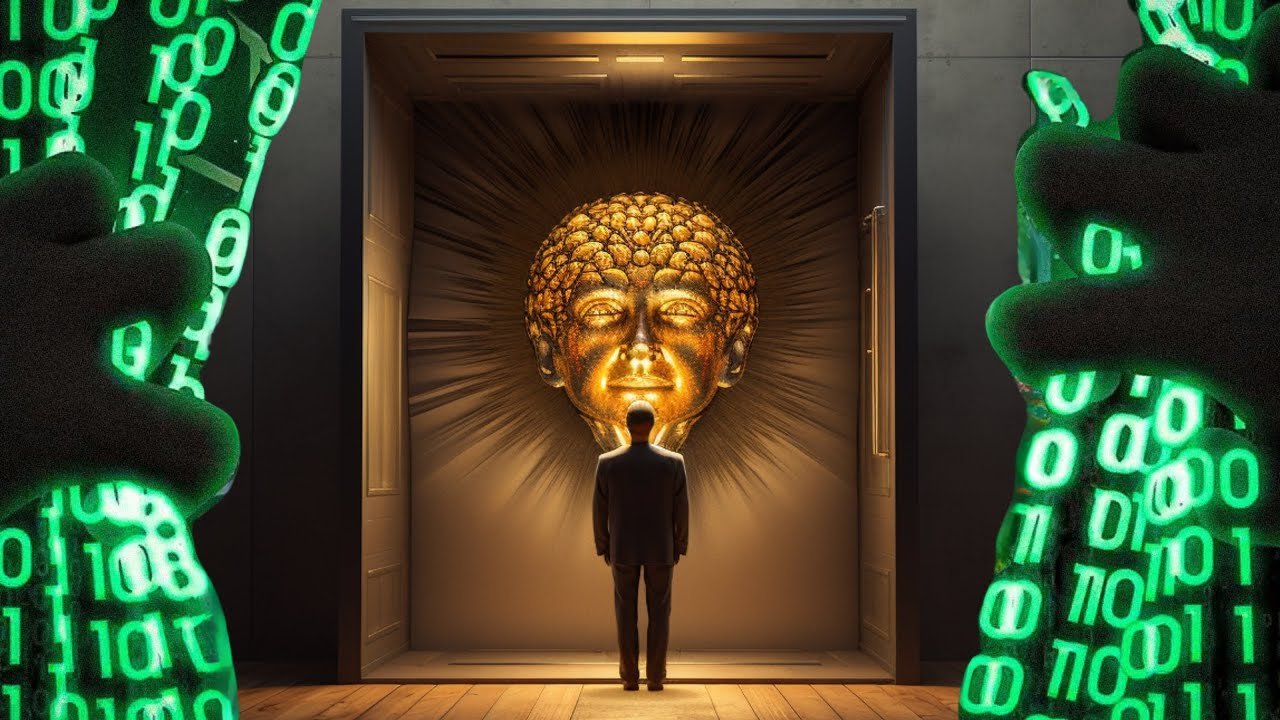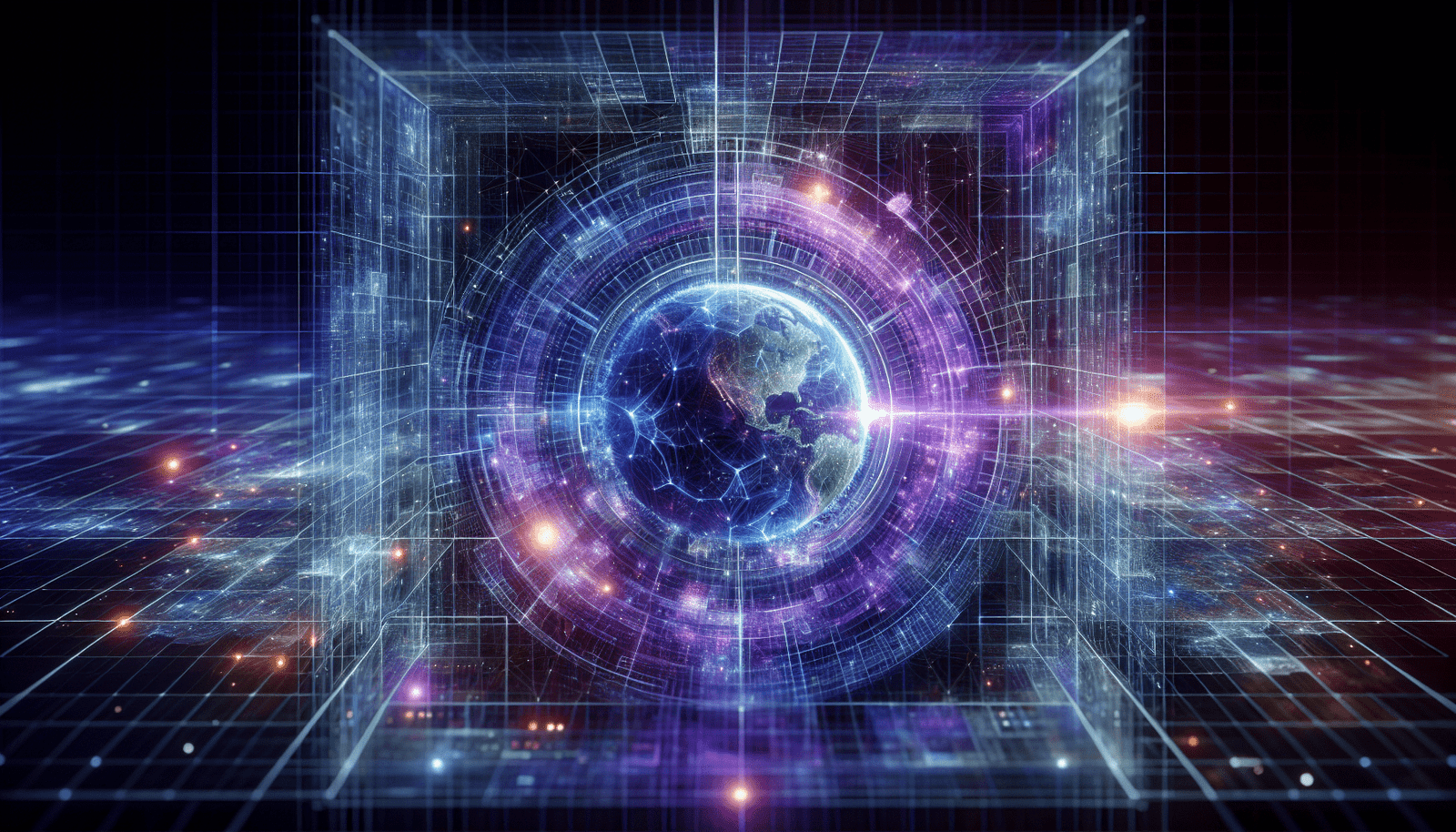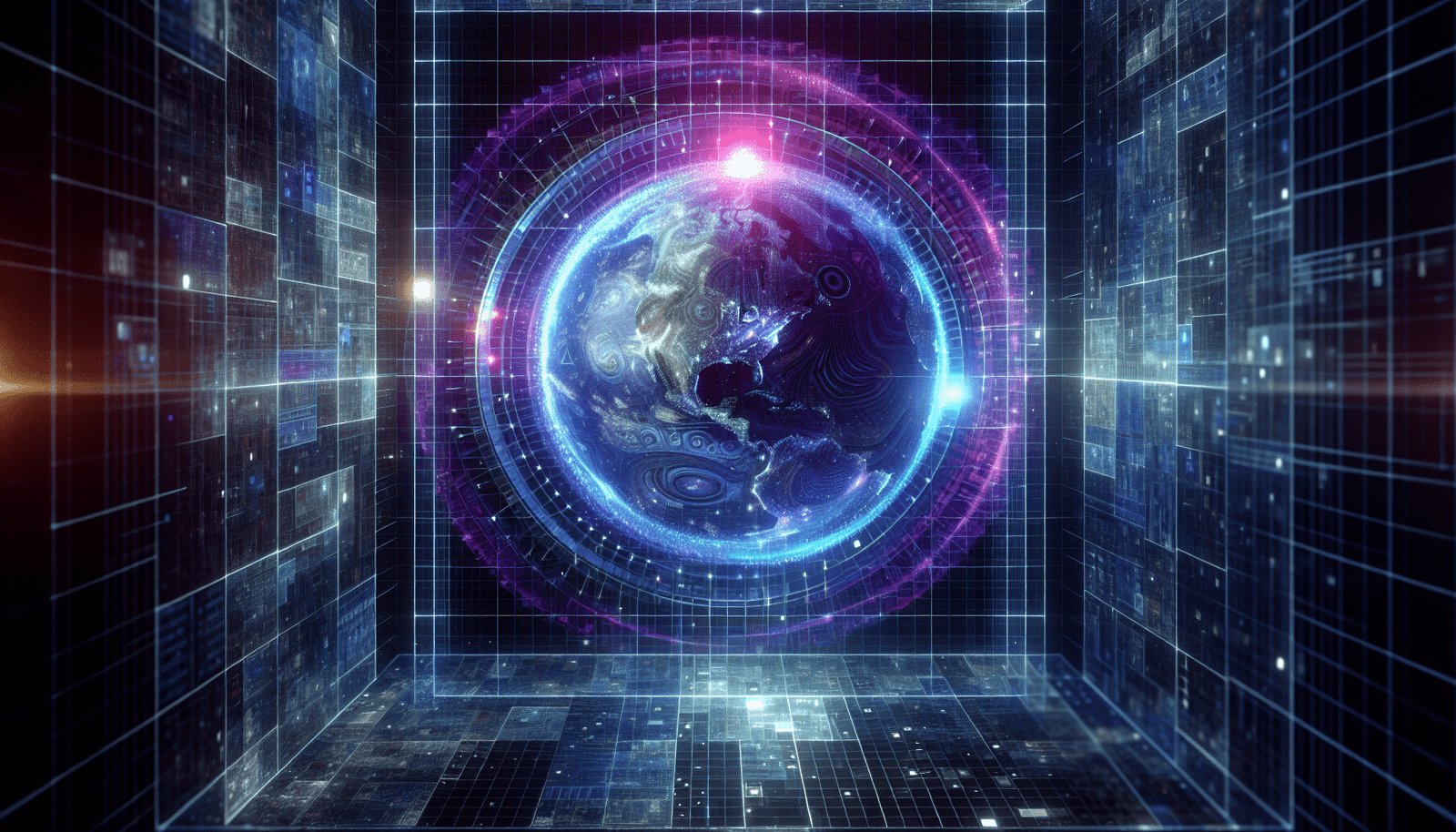In a world where reality feels as tangible as it is mysterious, you are about to uncover an intriguing perspective that challenges everything you thought you knew. Imagine living in a mind-altering hologram, a simulation akin to a complex video game where your consciousness holds the power to shape experiences. This idea invites a fresh lens to view life, suggesting that what seems real may actually be molded by our thoughts and emotions, akin to ancient philosophies like Hindu Maya and Buddhist Samsara.
The concept of this simulation blurs the boundaries between the virtual and the tangible, much like the latest advancements in technology such as VR and photorealistic graphics. By exploring strategies like visualization and meditation, you are encouraged to shift perceptions and manifest desires by recognizing reality’s fluid nature. Embracing this understanding can empower you to navigate life with intention and clarity, tapping into inner creative power and breaking free from limiting beliefs. Get ready to explore how this perspective can transform your journey, offering deeper insights into the layers of your own consciousness.

This image is property of i.ytimg.com.
Understanding Simulated Reality
Definition and Origins of Simulated Reality
Simulated reality is a concept that suggests the world we live in might not be the base reality we perceive but rather an artificial construct similar to a computer simulation or a holographic environment. This idea posits that what we consider “real” is actually a sophisticated illusion, possibly created by advanced beings or a future form of humanity. The origins of this concept can be traced back to philosophical musings about the nature of reality and existence, such as René Descartes’ “cogito, ergo sum” and the allegory of the cave by Plato. These philosophical ponderings set the stage for modern interpretations of a simulated world.
Historical References: Hindu Maya and Buddhist Samsara
The notion that reality may be an illusion is not new and appears in various ancient cultural and philosophical traditions. Hinduism presents the idea of Maya, which describes the world as illusory, suggesting that our sensory experiences are not the ultimate reality. Similarly, Buddhist philosophy introduces Samsara, the endless cycle of birth, death, and rebirth, focusing on the illusory and transient nature of worldly experiences. Both concepts emphasize that the perceived physical world distracts from the true nature of existence, urging individuals to seek enlightenment or liberation from these cycles.
Modern Technological Perspectives
Technological advances have invigorated the concept of simulated reality, particularly with developments in virtual reality (VR) and artificial intelligence. As technology continues to blur the lines between digital experiences and reality, the hypothesis that our existence might be a simulation gains plausibility. Notable figures like Elon Musk have speculated that we could be living in a simulation, drawing parallels between the rapid advancements in video game technology and the potential for creating a simulated universe indistinguishable from reality. These ideas foster debates in scientific and philosophical communities about the very nature of our existence.
The Concept of Reality as a Holographic Simulation
Introduction to the Holographic Universe Theory
The Holographic Universe Theory suggests that the universe is structured like a hologram, where each part contains the whole. This model implies that our three-dimensional experiences are manifestations derived from a two-dimensional plane of information encoded throughout the universe. This challenging and revolutionary perspective fuels discussions on how reality is not as objective as once thought, but rather a construct that can be perceived in myriad ways depending on the observer’s consciousness.
How Our Consciousness Shapes Experience
In this framework, consciousness plays a crucial role in shaping individual experiences. The idea here is that consciousness acts as an interpreter of the holographic reality that’s projected around us. Our mental states—thoughts, emotions, beliefs—are seen as active participants in shaping what we perceive and how we interact with the world. This perspective underscores the idea that humans are not passive receivers of information but active co-creators of their realities.
The Role of Mind-Altering Perceptions
Experiences involving altered states of consciousness, whether through meditation, spiritual practices, or mind-altering substances, suggest that our perception of reality can shift dramatically when the usual patterns of consciousness are disrupted. These experiences often highlight the fluid nature of reality and reinforce the idea that what we consider reality might be more malleable than previously understood. Such shifts can offer profound insights into the nature of existence and challenge our conventional understanding of what is real.
The Impact of Thoughts, Emotions, and Intentions
Power of Human Consciousness
Consciousness is often described as a powerful force capable of influencing the environment and experiences. In the context of simulated reality, your awareness and perception could change everything, from seemingly mundane actions to life-shaping decisions. The power inherent in your consciousness is akin to the driving force behind the simulation, suggesting that the reality you perceive stems partially from your mental focus and emotional state.
Shaping Reality through Focused Intent
By concentrating on specific thoughts, emotions, and outcomes, you might be able to influence the simulation-like structure of reality. The principle that where you place your attention is where energy flows suggests that intentional focus can bring about desired changes in your life. This idea aligns with many ancient practices where focused intent and visualization are used to manifest desires and alter circumstances.
The Intersection of Consciousness and Simulation
At the crossroads of consciousness and simulated reality lies the potential for transformation and empowerment. Understanding your reality as a simulation can shift your perspective, encouraging you to harness your creative power. This knowledge challenges you to become an intentional architect of your experiences, recognizing your thoughts and emotions as tools for navigation and manifestation.
Technological Advances and the Simulation Hypothesis
The Rise of Virtual Reality and Simulations
Virtual reality technology has progressed rapidly in recent years, pushing the boundaries of what seems possible within digital environments. These advances have made virtual worlds increasingly immersive and lifelike, prompting discussions about the plausibility of a simulated universe. As VR technology continues to evolve, it offers glimpses into how a constructed reality could operate, blending virtual experiences seamlessly with what we perceive as the real world.
Blurring Lines Between Digital and Real Worlds
As technology creates ever more sophisticated simulations, the line between digital environments and physical reality grows increasingly blurry. This fusion of experiences questions the authenticity of our perceptions and illustrates the potential for creating entirely self-contained digital worlds, which might be indistinguishable from actual physical environments. Such developments underscore the potential credibility of the simulation hypothesis.
Implications for Understanding Reality
The idea that reality might be a simulation carries profound implications for how we understand existence itself. If our experiences are simulations, it raises questions about the nature of consciousness, our purpose, and the fundamental truths of the universe. Grappling with these questions invites a reevaluation of the ways we interact with the world and could inspire shifts in scientific, philosophical, and personal paradigms.

Techniques to Hack the Simulation
Purification of the Mind
Purifying your mind involves clearing mental clutter and negative influences that might distort perception. This process can help align your thoughts with your intentions, making it easier to influence your reality positively. Practices such as mindfulness meditation and cognitive-behavioral techniques support mental purification by fostering a clear, focused, and empowered mindset.
Visualization and Meditation Practices
Visualization and meditation are powerful tools for shifting perception and manifesting desires. By visualizing desired outcomes and regularly engaging in meditative practices, you can train your mind to focus on possibilities rather than limitations. This focused attention can drive changes in the external world by influencing the underpinnings of the simulated reality you experience.
Manifesting Desires and Overcoming Beliefs
Harnessing visualization and meditative techniques can help you manifest your desires while overcoming limiting beliefs that might hinder your progress. Cultivating an awareness of self-imposed constraints allows you to challenge and reframe them, opening pathways to greater possibilities within the simulated reality framework. As you leverage these tools, you’ll find greater confidence in navigating the world you help to shape.
Cultural and Philosophical Alignments
Hindu Maya Concept and Illusion
The Hindu concept of Maya, the cosmic illusion, aligns closely with the idea of simulated reality. As described in Hindu philosophy, Maya is the veil that obscures the true nature of the universe, causing individuals to perceive a false reality shaped by desires and sensory experiences. Recognizing this illusion invites spiritual growth and a deeper understanding of the self beyond the veil.
Buddhist Samsara and Cyclical Existence
Buddhist philosophy’s concept of Samsara, the cyclical cycle of birth, death, and rebirth, highlights the transitory and ultimately illusory nature of worldly experiences. Liberation from Samsara, or attaining Nirvana, represents breaking free from the deception of perceived reality, which resonates with the idea of transcending the simulated aspects of existence through enlightenment and spiritual insight.
Cross-Cultural Philosophical Insights
Different cultures and philosophies offer varying insights into the nature of reality and illusion, collectively contributing to our understanding of simulated reality. Whether through the lens of Western philosophical inquiry, Eastern spiritual traditions, or indigenous perspectives, these cultural insights provide a rich tapestry of wisdom reflecting the shared human quest to comprehend existence’s enigmatic nature.

Empowering Individuals Through Simulated Reality
Navigating Life with Intention and Clarity
Viewing reality as a simulation empowers you to approach life with greater intention and clarity. This perspective encourages active participation in creating your experiences, emphasizing the power of choice and focus in shaping outcomes. By navigating life intentionally, you gain agency over your path, influencing the simulation to align with your true desires.
Focusing on Inner Creative Power
Recognizing your reality as a construct shifts focus from external circumstances to inner creative power. This understanding motivates you to harness your imagination, creativity, and intuition to navigate and influence the world. By relying on your inner resources, you can deftly maneuver through life’s simulations, effectively transforming challenges into opportunities.
Overcoming External Circumstances
Adopting the notion of simulated reality encourages resilience by highlighting the temporary and mutable nature of external circumstances. Rather than perceiving obstacles as insurmountable, they become opportunities for growth and learning within the simulation. This mindset fosters adaptability, encouraging you to overcome adversity by focusing on internal strength and purpose.
A Look at the Future of Simulated Reality
Ethical and Philosophical Questions
As the concept of simulated reality gains traction, it raises a plethora of ethical and philosophical questions. If reality is a simulation, what are the responsibilities of those who might control it? How does this knowledge impact concepts of free will, morality, and identity? Tackling these questions is crucial as we explore the implications of living in a possibly constructed universe.
Potential Technological Developments
Looking ahead, technological advancements could profoundly impact our understanding of simulated reality. As VR, AI, and quantum computing evolve, we might create even more realistic simulations, challenging distinctions between virtual and physical experiences. These developments could revolutionize our perception of reality, perhaps even unveiling new dimensions of existence.
Societal Impacts and Considerations
Understanding reality as a simulation could catalyze societal shifts in various fields, from education to ethics, governance, and beyond. It can change how we approach complex global challenges, emphasizing interconnectivity and the importance of collective consciousness in addressing societal issues. As this perspective gains ground, it encourages reimagining systems and structures to align with a more holistic view of existence.
Influence of Art and Media
Music by Scott Buckley: “Adrift Among Infinite Stars”
Art and music offer powerful avenues for conveying concepts related to simulated reality, with Scott Buckley’s “Adrift Among Infinite Stars” providing an evocative backdrop to reflect on cosmic and philosophical musings. Music can enhance understanding by capturing emotions and abstract ideas that transcend language, inviting listeners to explore different dimensions of consciousness and perception.
The Role of Art in Communicating Simulation Concepts
Art transcends language and cultural barriers, effectively communicating complex concepts such as simulated reality. Through visual art, literature, and performance, artists can explore themes of illusion, reality, and consciousness, inviting audiences to contemplate their assumptions about existence and challenging them to see beyond the surface of perceived reality.
Media’s Role in Shaping Public Perception
Media plays a pivotal role in shaping public perception of simulated reality. With films like “The Matrix” and “Inception” stimulating discussions about the nature of existence, media can inspire curiosity and critical thinking about philosophical and scientific ideas. By engaging audiences, media raises awareness of potential realities, sparking dialogue and exploration.
Conclusion
Recap of Key Concepts
Throughout this exploration, we delved into the concept of simulated reality, tracing its roots in ancient philosophies and modern technological advancements. We examined the role of consciousness in shaping our experiences, the impact of thoughts and emotions, and the philosophical implications of viewing reality as a simulated environment.
The Ongoing Exploration of Simulated Reality
Simulated reality remains an evolving field of inquiry, inviting ongoing exploration across disciplines, cultures, and ideologies. As our understanding deepens, it challenges our perceptions, inspiring new insights into the nature of existence and consciousness.
Final Thoughts on Consciousness and Illusion
Ultimately, grappling with the concept of simulated reality encourages us to reconsider our assumptions about consciousness and illusion. It empowers us to embrace our creative capacities, acknowledging the fluidity of existence and the profound role we play in shaping our experiences within the intricate tapestry of reality.

